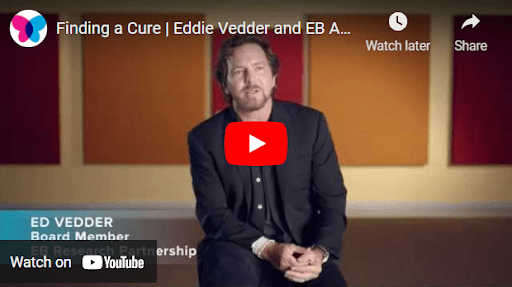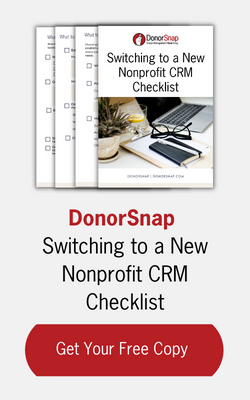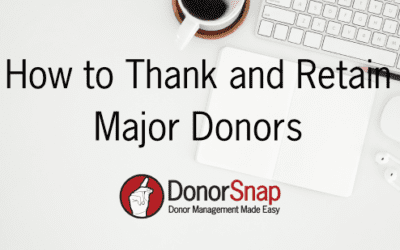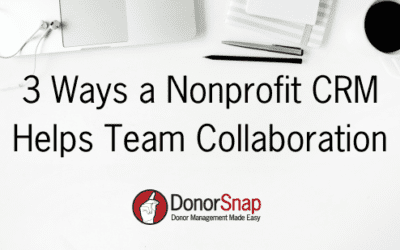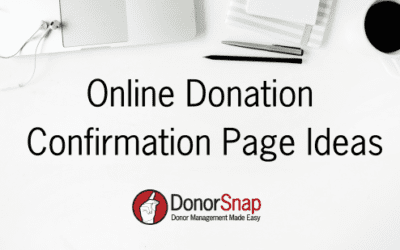Nonprofits need to be great storytellers. Sharing stories of your organization and the work you do, as well as those of your donors and the people you help, impacts your success as an organization.
Weaving emotion and reason into your nonprofit’s narrative is a great way to amplify your powers of persuasion.
All you have to do is know your message, find the right example, craft a story that will evoke passion, and support it with facts.
If you’re not sure exactly how to do that, read on to discover everything you need to know about how to use emotion and reason to write a donation-worthy impact story for your organization.
But first, a quick definition of what an impact story is, and why it’s so important.
What is an Impact Story?
An impact story is a narrative that helps to explain what your organization does by featuring real people and events.
As humans, we absolutely love stories. Ever since we developed speech, we’ve used stories as a way to communicate our experiences and emotions.
Your impact story can be an effective way to make an emotional connection between your organization’s audience and the work that you do.
The story can be in the form of a blog post, email, social media post, video or even a photo essay – whatever your imagination can conceive. For example, the American Cancer Society of Hawaii teamed up with card gaming site Solitaired to create a solitaire game which highlighted members and donors within the game as a unique way to communicate their impact story.
All of the above examples count as impact stories and, when done right, they can be used to convert potential donors into engaged, long-term supporters of your cause, as shown in the examples below:
Example #1: Blog Post on Medium:

Example #2: Video On YouTube:
Example #3: Post on Social Media:
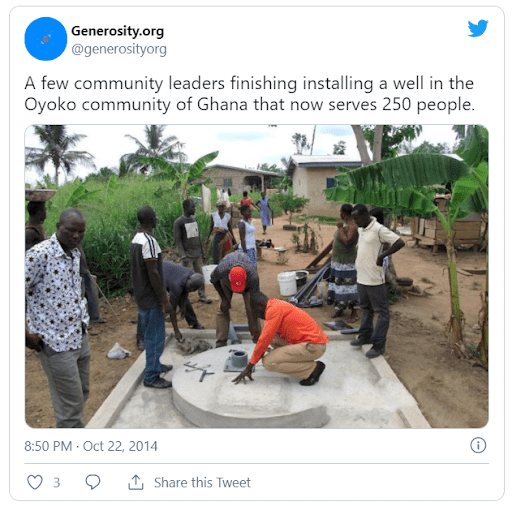
Why is an Impact Story So Important?
Stories can be used for a lot of different purposes such as:
- To educate
- To solve problems
- To provide pleasure
… and so on.
Here, we are considering how to use stories to communicate the difference your nonprofit organization makes in people’s lives. That is, your outcomes and impact.
Stories explain how and why things change, which makes them the ideal medium to communicate how your organization is making a difference in the world.
Having said that, it’s important to note that not all stories are impactful. If you share a dry, dull impact report, it’s unlikely to evoke the type of response that you’re hoping for.
You need to understand the important elements of an impact story and how you can use them to persuade potential donors to give to your nonprofit organization.
Below, we take a look at a few simple steps that you can use to “storify” your impact report regardless of the form it may take (social media post, blog post, YouTube video, photo essay, etc.)
Important Elements of an Impact Story
These are the important elements you need to focus on in order to better inspire and engage your audience.
They will help you show potential donors what their generosity will help accomplish and cultivate support for your cause.
Use the “Identifiable Victim Effect” to Activate Empathy
Studies have shown that people are more likely to empathize with a single person than a group (a.k.a the “identifiable victim effect”). Make sure you focus your impact story on a single character that your readers can identify with.
Use Sensory Details
Your story should include details from as many of the senses as possible. The more you can align your narrative with sight, sound, taste, smell, and touch, the easier it will be for the brain to immerse itself in the story.
Grab The Donor’s Attention
These days, attention spans are very short. This means that no matter how good your impact story is, it might not elicit the desired results unless it can arrest the reader’s attention from the start to give you a chance to get your message across.
Whether your organization’s story is pages long or short enough to fit into a tweet, each of these elements will serve to make it more powerful.
Now that we’ve covered the elements featured in a good nonprofit impact story, it’s time to take a look at the 5 tips for using emotion and reason to write an effective and compelling narrative.
How to Use Emotion and Reason to Write Your Impact Story
Your impact story should not simply cater to one’s emotions or their use of reason. Rather, it needs to speak to both emotions and reason in order to have the intended effect.
So, use the 5 tips below to help you write an impact story for your organization that will move the hearts and minds of your donors.
1. Know Your Audience
The first step in crafting a powerful impact story is to forge strong, personal, emotional connections with your audience. And doing so requires that you get to know your audience.
Different audiences relate to different things, so you need to know exactly who you’re talking to from the outset and always have that audience in mind when deciding on the format and content of your impact story.
That way, you will be able to create interesting and relevant stories your donors can relate to. For instance, you may have one story for your organization, but you won’t tell it the same way to your donors as you would your volunteers.
- Ask yourself who you’re writing for. Find out their demographic traits – that is, the characteristics that identify each individual, but that they have in common with others.
- You also need to ask yourself what the problem is that you’re focused on, and the solution you provide.
- Finally, think about the emotion you want the reader to feel after reading your impact story.
The answers to these key questions will serve as a framework for your narrative and help to keep you focused on your end goal.
2. Set the Scene
Your next step is to set the scene so you can help your audience see and feel what the situation is like at the point where your story begins.
Talk about the needs you are responding to, as well as the scale of those issues. Highlight anything that your characters have in common with your audience to make it more likely that potential donors will engage with your story.
There are many different ways you can go about this. Some of the most common categories of stories for nonprofits, according to Andy Goodman of The Goodman Center, include the following:
- The “Creation” Story: The story of who started your organization and why it was started, as well as when, and how it all began.
- The “Nature of Our Challenge” Story: This story outlines the problems that you address with your services or programs.
- The “Values” Story: This is where you share how your organization lives into each of its core values.
- The “Emblematic Success” Story: This story shows the unique way in which your organization makes a difference.
- The “Striving to Improve” Story: This story outlines how you are always striving to do better and learn from your mistakes and is great for eliciting empathy.
- The “Where We’re Going” Story: This vision story showcases what your organization will look like or the impact you will make 5 or 10 years in the future if it does its job right.
3. Shape Your Narrative
Your next step in crafting an effective impact story is to shape your narrative.
Regardless of the type of story you tell, you need to follow the basic rules of storytelling to give your impact story more, well, impact.
Rather than give a simple “This is where we started, some things happened, and this is where we are now” story, you want to tell your story in a way that will be meaningful to your audience
A well-shaped narrative must have a clear structure. It needs a beginning, middle, and end that describes the journey your character makes when engaging with your services.
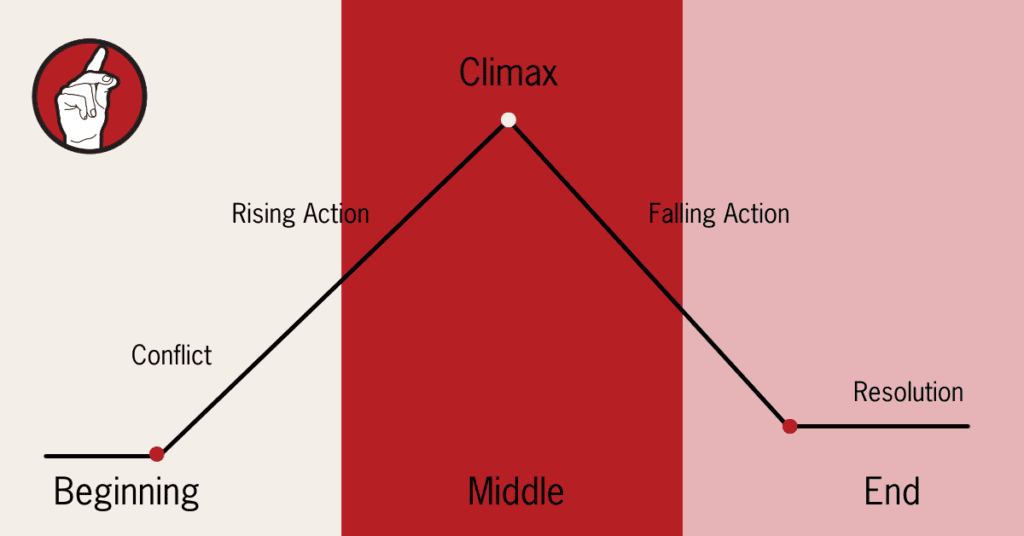
Beginning: Popular storytelling structures for nonprofits include the hero’s journey, rags-to-riches, and “fight the monster” (poverty, lack of opportunity, etc.) Regardless of the structure you choose, your story must have a beginning. This can be where your hero lives a normal life (exposition) before something throws their life out of balance (conflict).
Middle: This is where the hero battles to deal with their cruel reality, with the help of your organization (rising action). This part of the story showcases the ups and downs along the journey as the hero is caught between positive and negative forces until you get to a turning point in the story (climax).
End: This is where things are resolved into an improved new reality (falling action and resolution). Although this part doesn’t necessarily need to leave readers with warm fuzzies, it should at least make them think deeper and leave them with a clear link between the emotions they feel and your organization.
Sharing a narrative like this will help to create tension and keep your audience engaged up until the end.
If you can make your audience understand where you’re coming from and why you are needed, it also helps give them more appreciation of the amount of effort that you put into creating your outcomes and impact.
4. Lead With the Story and Finish With Data
Storytelling will help you appeal to your audience’s emotions, while data will engage their reason. To use them effectively together, you need to lead with the story and end with data.
A common mistake many organizations make is that they include tons of data believing that the more statistics they can cram into their impact story, the bigger impact they are showing.
But, that’s not how it works. It’s important to include relevant data to provide evidence that your nonprofit is making a difference, but the numbers shouldn’t overshadow the human element.
A better way is to hook your readers immediately using a story that is filled with tension, emotion, conflict, etc. This will elicit their emotions and then you can use supporting metrics to enhance their belief in your mission.
To do this you’ll either need to hire a video editor or use one of these editing tools to create and edit something that’ll connect with your audience.
5. Use Evocative Language
Last on our list, but equally important, is the ability to use evocative language when crafting your impact story.
The words you choose will make all the difference in how your donors feel – and the amount of donations you get as a result.
So, make sure you choose sensory, emotional, powerful words that trigger the types of reactions you want to evoke.
But which emotions should you trigger to increase donations?
Some emotions are more powerful drivers of behavior than others. As a nonprofit organization, you need to focus on the emotions that motivate your audience to act.
The action can be taken to satisfy the emotion they are experiencing at the moment (e.g. they are feeling generous so they want to give) or it can be an action that’s taken to achieve an emotional state they desire (e.g. they want to stop feeling guilty, so they’ll give money to feel like they’ve “at least done something” to help).
In fundraising, there is a wide range of desired emotional states that you can trigger with your impact story in order to increase donations.
These include:
- Empathy
- Rapport
- Alleviating Pain/Sadness/Guilt
- Feeling Joy/Love/Satisfaction
- Positive Expectancy
- Trust
- Anger/Disgust/Shame
- Indignation
- Obligation
- Significance/Meaning
Focus on any of these emotions to help you write a donation-worthy impact story for your nonprofit organization.
6. [BONUS] Sharing Your Story
While it’s great to create a donation-worthy story, it’s crucial that people actually see it to make sure that the story has the impact you’d hope for.
It’s a given that you should share your story on social media and your website, but this may not make an impact if you don’t have many followers. That said, below is a list of different promotional tactics to consider when sharing your impact story.
- Email marketing: While most don’t realize this, nonprofit email marketing has one of the best returns on investment of any marketing activity there is. Stay in contact with your current and prospective donor pool using an email marketing solution you prefer.
- Webinars: Running a webinar to help people understand the impact that your organization has can be an incredibly powerful way to connect with their following.
- Create PPC Ads: PPC, or Pay Per Click ads are a great way to get attention to what your organization is doing. But even more important, Google provides ad grants to nonprofit organizations and it’s a great way to partner with a huge company that has a lot of reach if you get accepted into the program.
- Create Influential partnerships: There are many different influencers out there who strongly believe in giving back. Research to find individuals who believe in a cause that your organization addresses and see if they’ll work with you.
- Try to Create Viral Content: While this one is more difficult than the other ideas mentioned, if you’re able to create a heartwarming video that connects to people you can use funds to take out Facebook ads and attempt to make your video go viral.
Conclusion
I’m willing to bet that your organization already has a ton of content that you can build on for powerful nonprofit storytelling.
From new beginnings to stories of hope, progress, and redemption – you already have much of what you need to write a donation with the impact story.
Use the tips outlined in this article to help you put it all together in a way that will compel readers to donate to your cause.
Did you learn anything new? Which of our tips did you find most impactful? Share your thoughts in the comments below!
BYLINE:

Ron Stefanski is an online entrepreneur and marketing professor who has a passion for helping people create and market their own online business. You can learn more from him by visiting OneHourProfessor.com

